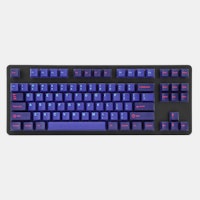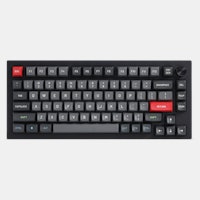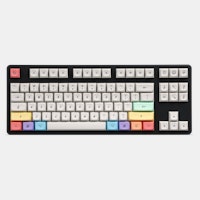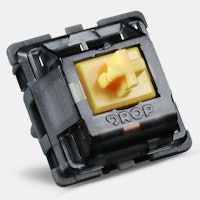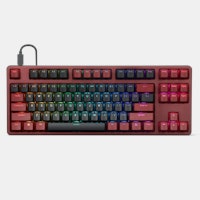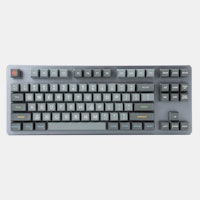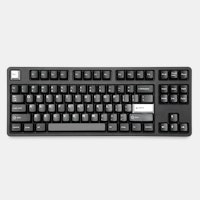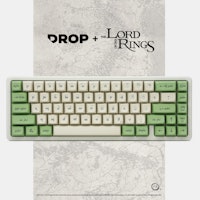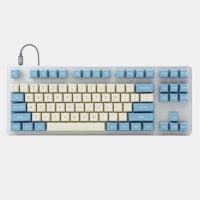Click to view our Accessibility Statement or contact us with accessibility-related questions














The GMK Color Matching Process Explained
One of the most important aspect of designing a keycap set is the color selection and subsequent color matching process. Without a solid combination of colors that resonates with the community, a set is almost certainly destined for obscurity, or even at risk of not being manufactured at all. The entire process is also one of the few steps that can really derail a set’s production estimate. In this post I hope to shed some light on the color selection and matching process from start to finish and give plenty of tips along the way to ensure that this step will go as smoothly as possible for anyone that plans on designing a GMK keycap set.
The first, and often overlooked step, is to calibrate your monitor(s)! If you’re like me and not a graphic designer by trade, chances are that you leave your monitor in some kind of gaming mode, or eye comfort mode, and not setup to give the most accurate color reproduction. Another good thing to do is check your work on multiple devices or screens – so check what the renders look like on your monitor, phone, tv, etc.
The next aspect I want to discuss is where to even begin looking for colors. The first place to check would simply the stock GMK colors as seen below:

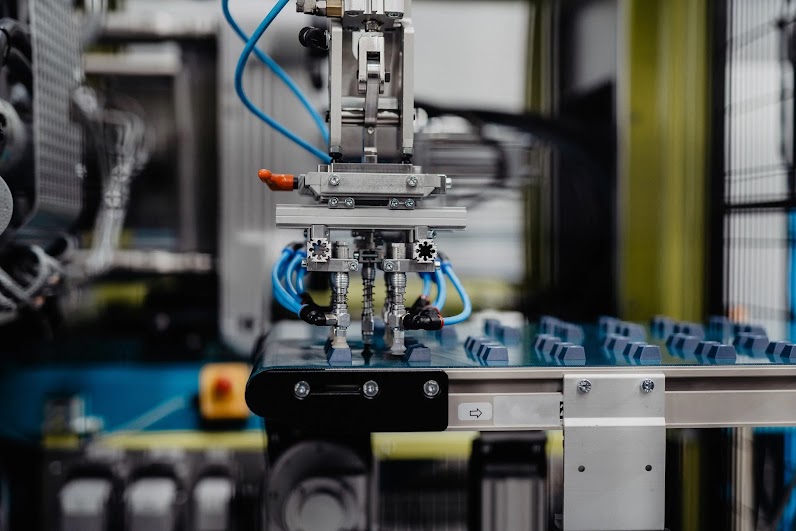
Image of a GMK Injection Molding Machine: Oblotzky Industries
Over the past few years, renders for group buys have become so much more detailed and realistic – and have become a huge factor in determining how well a set will sell. Many of the community members doing renders are very competent at their craft, and are artists in their own right! At the same time, there have been times where renders clearly made use of a very particular lighting, or shading to make a set look really good for the renders, but put less emphasis on accurately depicting the final product. In these instances a set may be matched perfectly to the submitted color codes, but still come out completely different than what the buyers in the community were expecting. The best recommendation I have is to always make sure you get a few renders that are made to be as accurate as possible without any artistic lighting or shading, and then have as many renders in various types of lighting to supplement those base renders.
For anyone wanting to dig a little bit deeper, here's a PDF guide to the entire process you can download directly from the GMK website. If you have any questions please comment below and I'll do my best to address them each individually!

search
close
Sort by: Newest
keyboard_arrow_downThereminGoatMK
468
Keyboard Club Member
Feb 8, 2023
Always love seeing photos from the factory floor. Thanks for including one!

krugerlive
196
Feb 1, 2023
Plastic pantone chips are required, not just recommended, right? It's my understanding and experience that you can't match Pantone colors without it and the paper chips won't cut it.

GMK_Andy
151
Feb 2, 2023
krugerliveYes. If the vendor doesn't supply them we can acquire them. The point here though is that the person designing the set really should be getting them to view on their own! It is a totally different experience seeing the colors in person, and looking at them under real lighting than just comparing them on a monitor.
(Edited)

M0les
12
Feb 1, 2023
Thanks for the article. I scanned the GMK doc. and found it very informative.
Do you know if there's any possibility of legends on the front face of the keys (in addition to the top, like a C64 keyboard)?

GMK_Andy
151
Feb 1, 2023
M0lesFront legends can be pad printed on - I'll have to find what the exact tolerances/area of print is though!

GMK_Andy
151
Feb 1, 2023
M0lesYou can actually see this on the front of the standard color caps - the codes are just pad printed on! Didn't think to just mention that :)

Morbii
427
Keyboard Club Member
Feb 1, 2023
Hanami Dango instantly came to mind when reading the second to last paragraph, hahaha
PRODUCTS YOU MAY LIKE
Trending Posts in Mechanical Keyboards
The-Cindy
This is easily my new favorite keeb
The IDOBAO ID80 Crystal Gasket Keyboard Kit is a standout choice for mechanical keyboard enthusiasts seeking both aesthetics and performance. Its transparent acrylic case beautifully showcases the...
Dec 20, 2024
Squizzle
Keyboard & Drink
Shine-Through LOTR Keycaps Concept
Would anyone else be interested in a shine-through set of LOTR keycaps? Imagine a glowing black speech keycap set that seduces like the one ring. Perhaps the pale blue moonlight glow of the elven...
Dec 20, 2024
Akofena
Are shipments to Argentina safe?
I want to buy a keyboard with some keycaps ! but i live in argentina. ty
Dec 17, 2024

tbui
Absolutely stunning
The colors really pop on a white board. Easily one of the best caps I own!
Dec 17, 2024
bobbibeer1976
False Advertising BEWARE
This company should be ashamed of themselves. Advertising to young people who save all their money and want nothing more than a keyboard and advertise to them that it is in stock and will be shipped asap and they will arrive before Christmas. Only to "ship" and package and get their hopes up and it arrives and there is no keyboard in the package. Then to get on the website and it isn't even going to ship until January. This happens AFTER you have received their money and made promises that it was arriving, on it 's way, etc! Shame Shame on you!!!
Dec 16, 2024

EuclideanGambit
Closest profile to MT3
I really enjoy the MT3 profile, it has actually become kind of difficult to type on other profiles. So I was looking for some that might be close and noticed the SA profile. I was wondering if there were anymore that were close to it. This would open my options significantly when shopping around.
Dec 15, 2024

tbui
Displaying my DCD Lunar New Year set (Max)
Enough for a full base kit plus novelties, just gotta watch the ample space on top when moving/tilting and near the edges it gets tight so the caps don't fit in as smoothly.
Dec 15, 2024
